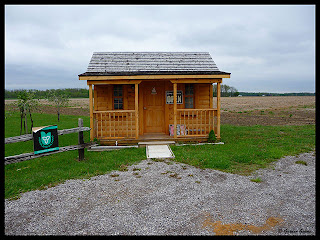I strongly advocate buying locally as close to home as possible. Ideally we try to consume foods that are grown/produced/sold within a 100 mile radius of our home. I followed the 100 Mile Challenge a television series hosted by James MacKinnon and Alisa Smith and prominent locavores where 6 families took the 100 Mile Challenge to eat locally for 100 days. What really amazed me is the amount of complaining about what they couldn't eat brought up by these familiess.
A 100 Mile Challenge would be rather easy where we live. Surprisingly this does not eliminates a many foods as you would think given our location. We are in the food belt of Canada which means a lot of locally grown foods. Surprisingly sugar beets are grown in our area that are refined into sugar in Michigan still coming within the 100 mile radius and salt is mined also near-by. We also have locally produced wines, whiskey and beers. It's easier to list some of the foods that aren't grown locally such as peppercorn, cocoa, coffee beans, black/green teas, most citrus and tropical fruits, wild salmon (although occasionally locally caught), cinnamon, vanilla beans so there are definitely some foods we would have go without if doing a full challenge. However, we aren't doing a full challenge so it works out that about 90% of the foods we consume are grown/produced/sold fall into the 100 mile radius. The first question many ask is how do you find the smaller roadside stands?
Pictured is a roadside stand sign we spotted while picking up our beef. As roadside signs go this one is quite nice and at least visible before having to slam on the brakes then to do a quick reverse. What is even more annoying is after you do all this the stand may be closed. A lot of times the stands use the honour system self-service of trusting you to put the money in a provided container. In most cases signage is hand written on small pieces of board nailed to wherever they can nail it so quite often there is little notice.
Signage is a great way to find roadside stands. In Ontario look for the Foodland Ontario sign as well although as in this case it is not where you could easily see it from the road. Farm stands are usually rather plan with a table for the produce and some type of sun protection over top. Many serious sellers are putting up fancier shed shops. They aren't big, only about the size of a large garden shed but they do standout against the landscape well before seeing the farm stand sign. They are usually set fairly close to the road.
Bon Appétit!
Garden Gnome
Garden Gnome
©2006-2010



















0 comments:
Post a Comment